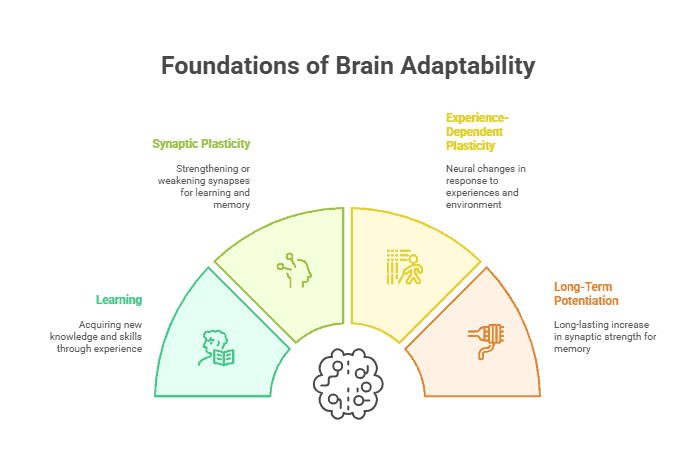Neuroplasticity, also known as brain plasticity, is the brain’s ability to reorganize itself by forming new neural connections throughout life. This phenomenon plays a crucial role in learning and memory, as well as recovery from brain injuries and adapting to new experiences.
How Does Neuroplasticity Work?
Neuroplasticity involves the brain’s ability to modify its structure and function in response to learning, experience, and environmental factors. When we learn something new or practice a skill, our brain undergoes changes at the cellular level. This can include the formation of new synapses, the strengthening of existing connections, and even the generation of new neurons.
Types of Neuroplasticity
There are two main types of neuroplasticity: synaptic plasticity and structural plasticity. Synaptic plasticity refers to changes in the strength or efficiency of synaptic connections between neurons, while structural plasticity involves changes in the physical structure of neurons, such as the growth of dendrites or axon branches.
Role of Neuroplasticity in Learning
Neuroplasticity is essential for learning and memory formation. When we learn something new, our brain forms new connections between neurons, allowing us to retain and recall information. This process is known as long-term potentiation, which strengthens synaptic connections involved in learning and memory.
Benefits of Neuroplasticity
Neuroplasticity has numerous benefits, including the ability to recover from brain injuries, adapt to new experiences, and improve cognitive function. By harnessing the brain’s plasticity, we can enhance our learning abilities, memory retention, and overall brain health.
Summary
Neuroplasticity is the brain’s ability to reorganize itself by forming new neural connections throughout life. It involves changes at the cellular level, such as the formation of new synapses and the strengthening of existing connections. There are two main types of neuroplasticity: synaptic plasticity and structural plasticity. Neuroplasticity plays a crucial role in learning and memory formation, as well as recovery from brain injuries and adapting to new experiences. By understanding and harnessing neuroplasticity, we can improve our cognitive function and overall brain health.
Key Takeaways:
- Neuroplasticity is the brain’s ability to reorganize itself by forming new neural connections throughout life.
- Learning and experience can lead to changes in the brain’s structure and function through neuroplasticity.
- Neuroplasticity plays a critical role in the brain’s ability to adapt to new information and environments.
- Factors such as age, genetics, and environment can influence the extent of neuroplasticity in an individual.
- Activities such as learning new skills, physical exercise, and cognitive training can promote neuroplasticity.
Key Terms:
- Neuroplasticity: The brain’s ability to reorganize itself by forming new neural connections throughout life.
- Learning: The process of acquiring new knowledge or skills through experience, study, or instruction.
- Synaptic plasticity: The ability of synapses to strengthen or weaken over time, which is essential for learning and memory.
- Experience-dependent plasticity: Changes in neural connections that occur in response to an individual’s experiences and environment.
- Long-term potentiation (LTP): A long-lasting increase in synaptic strength that is often associated with learning and memory.
